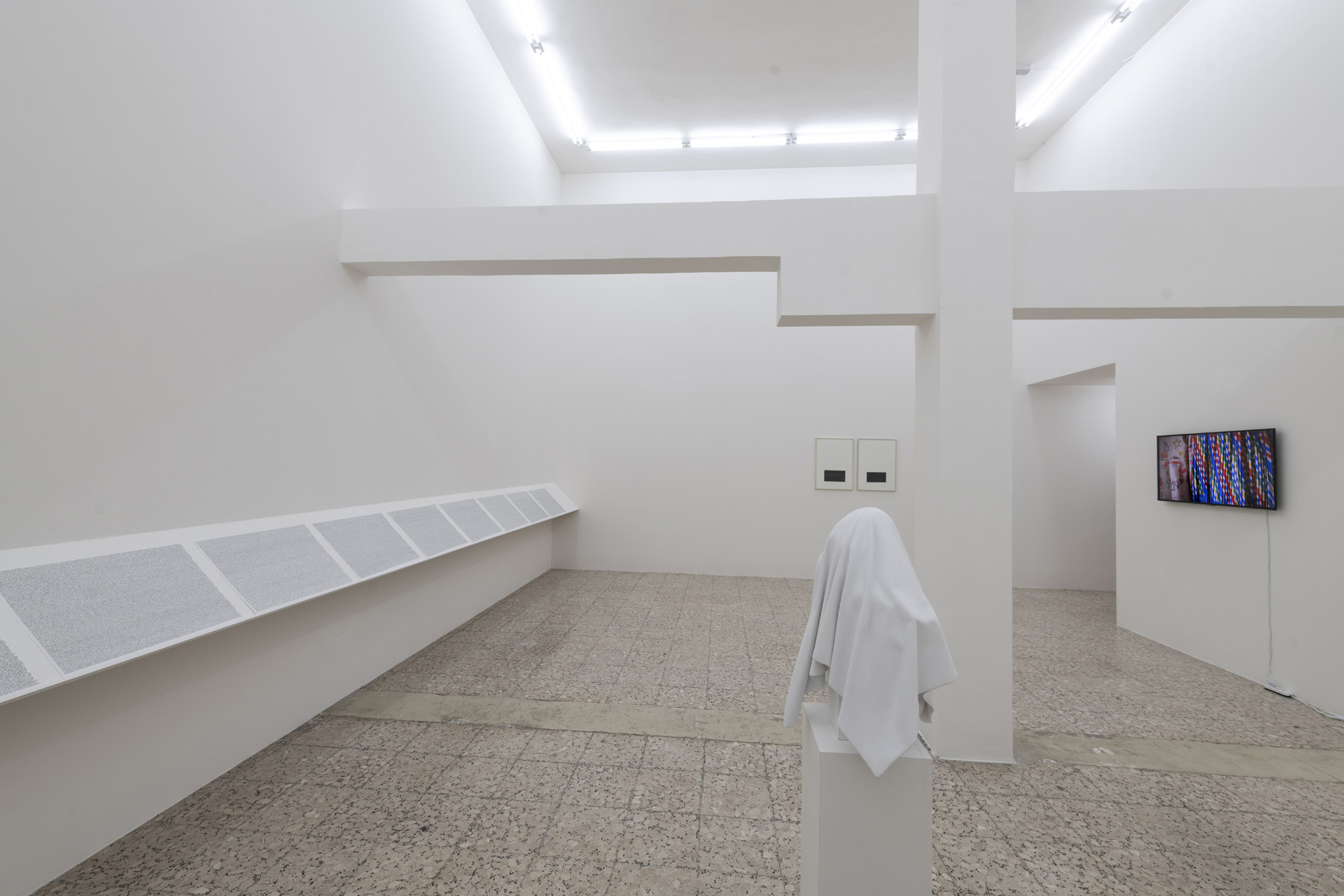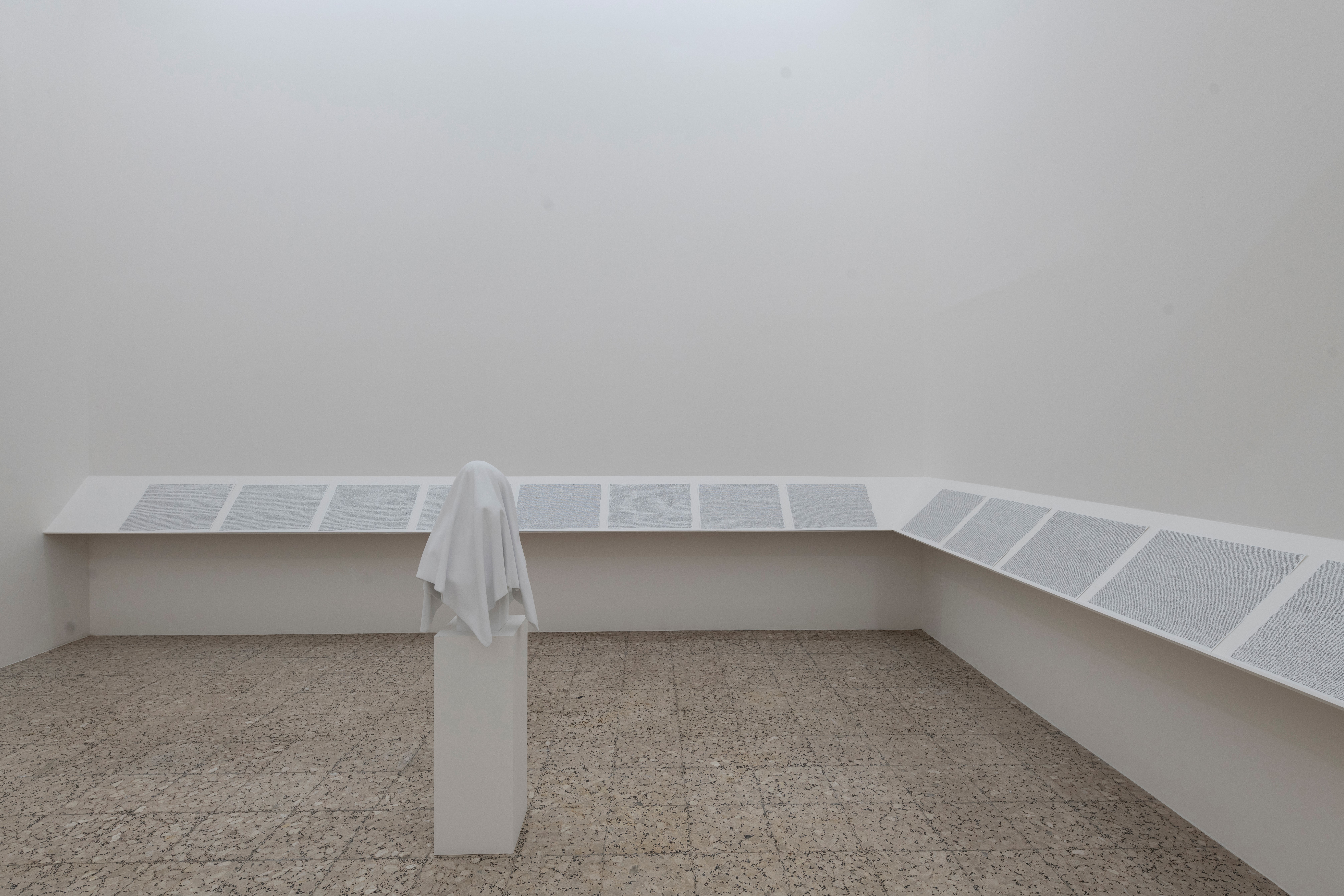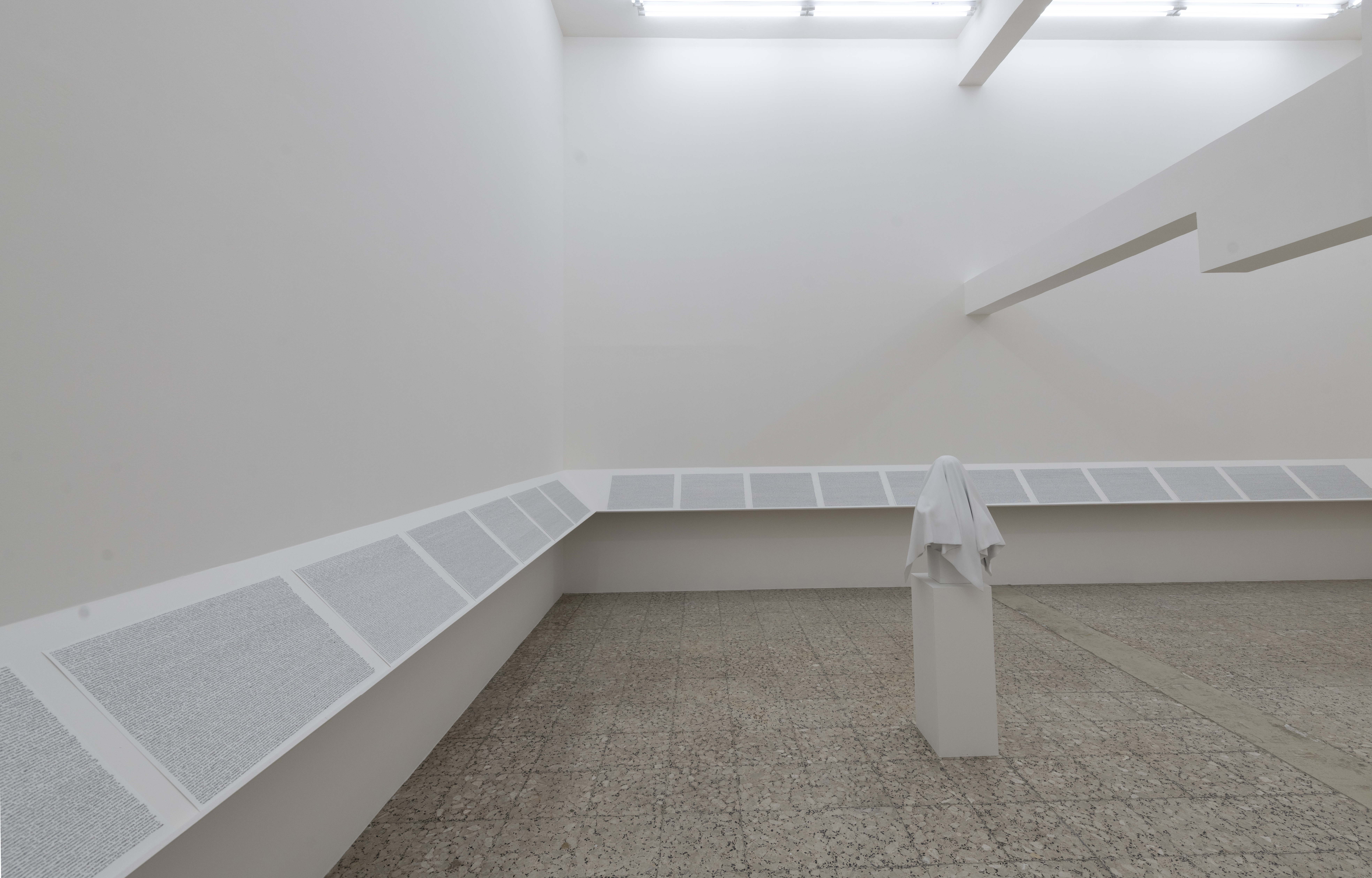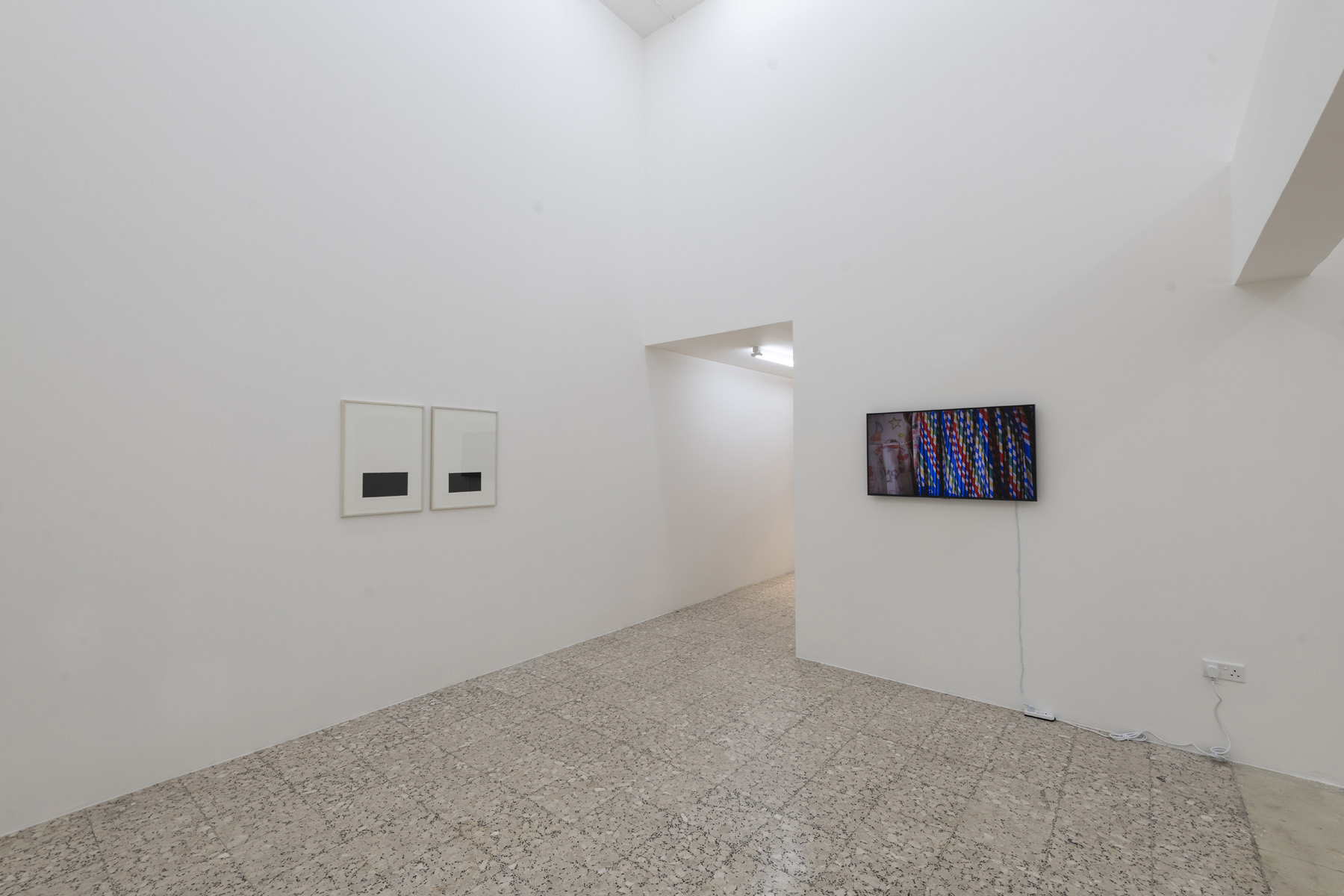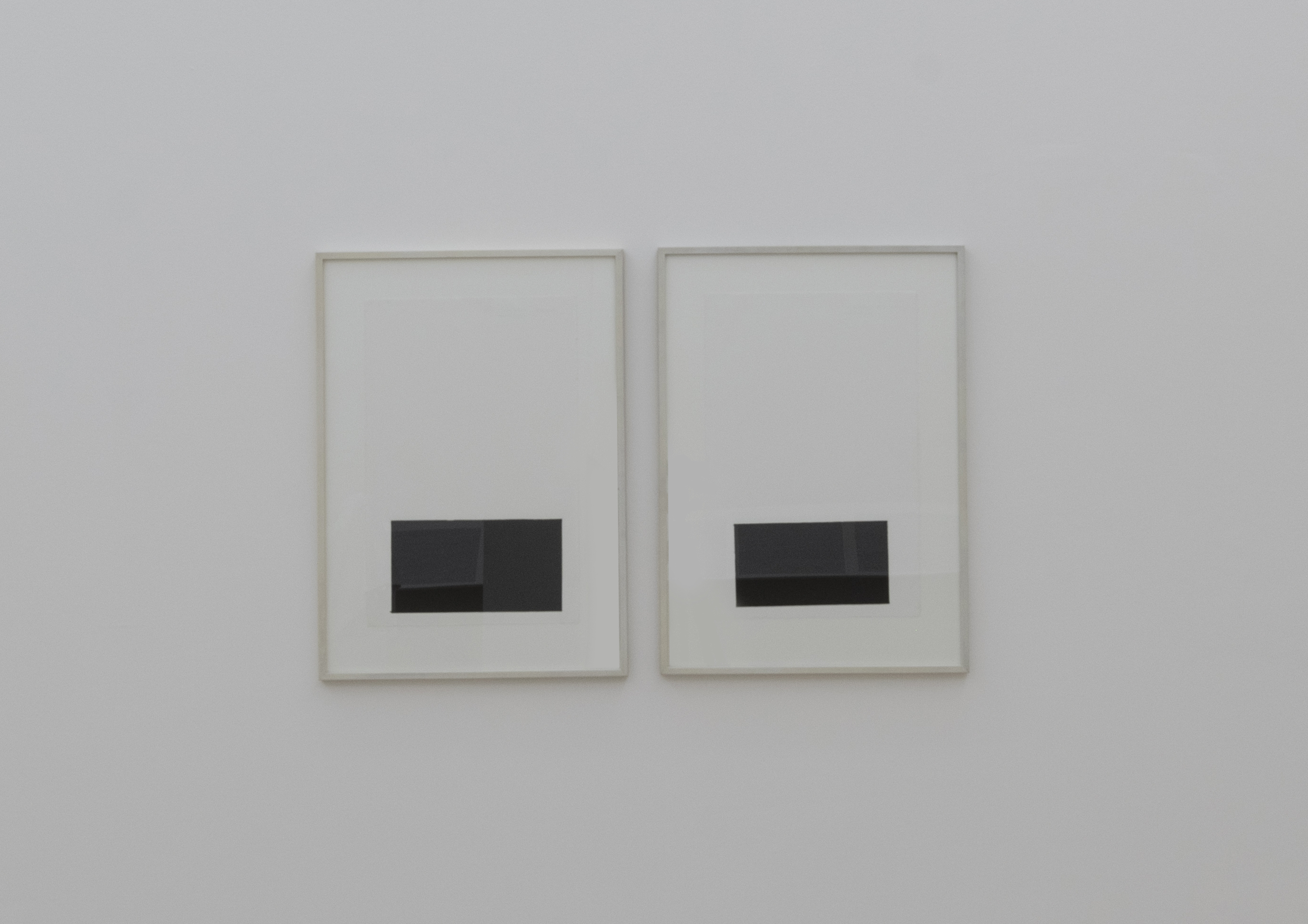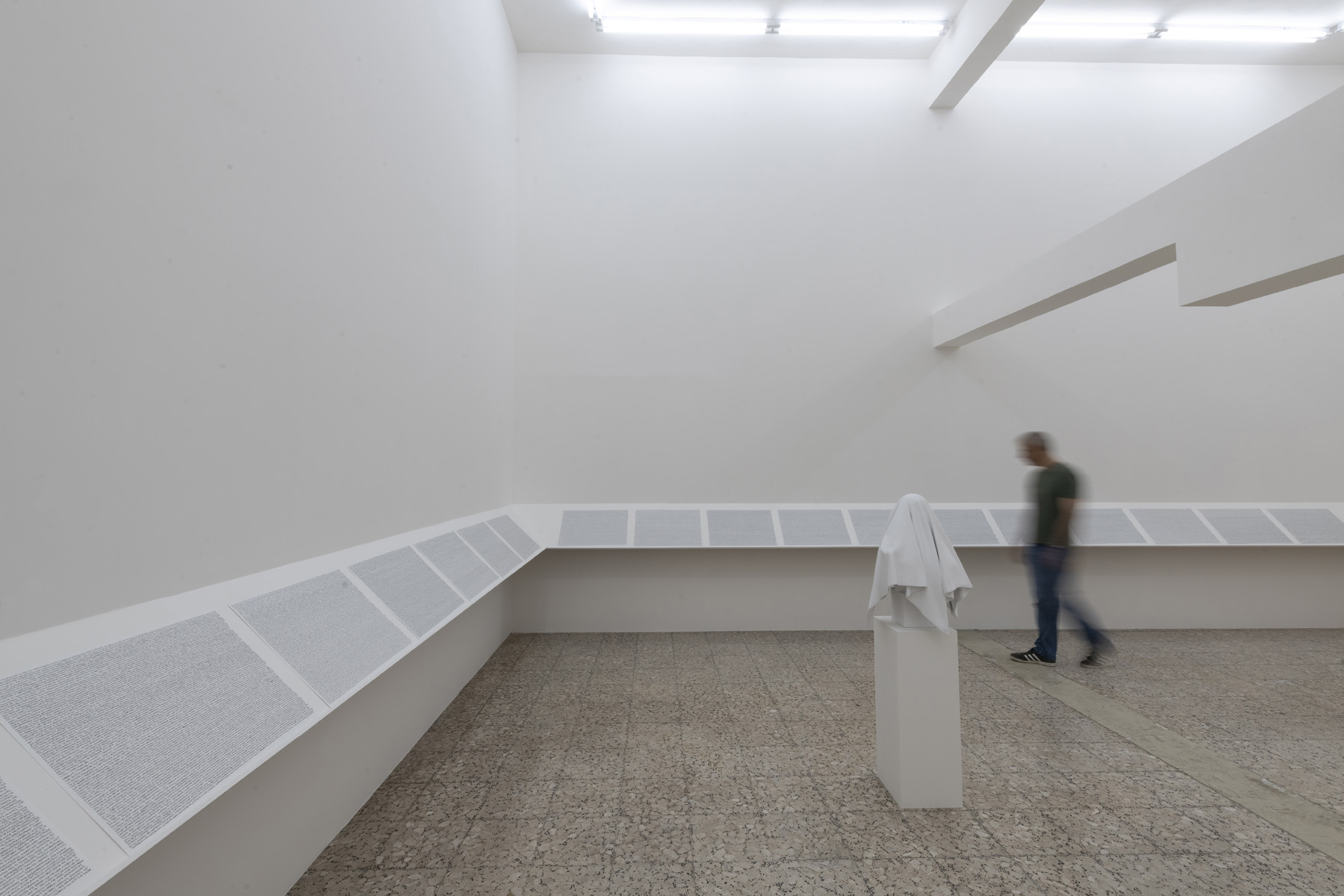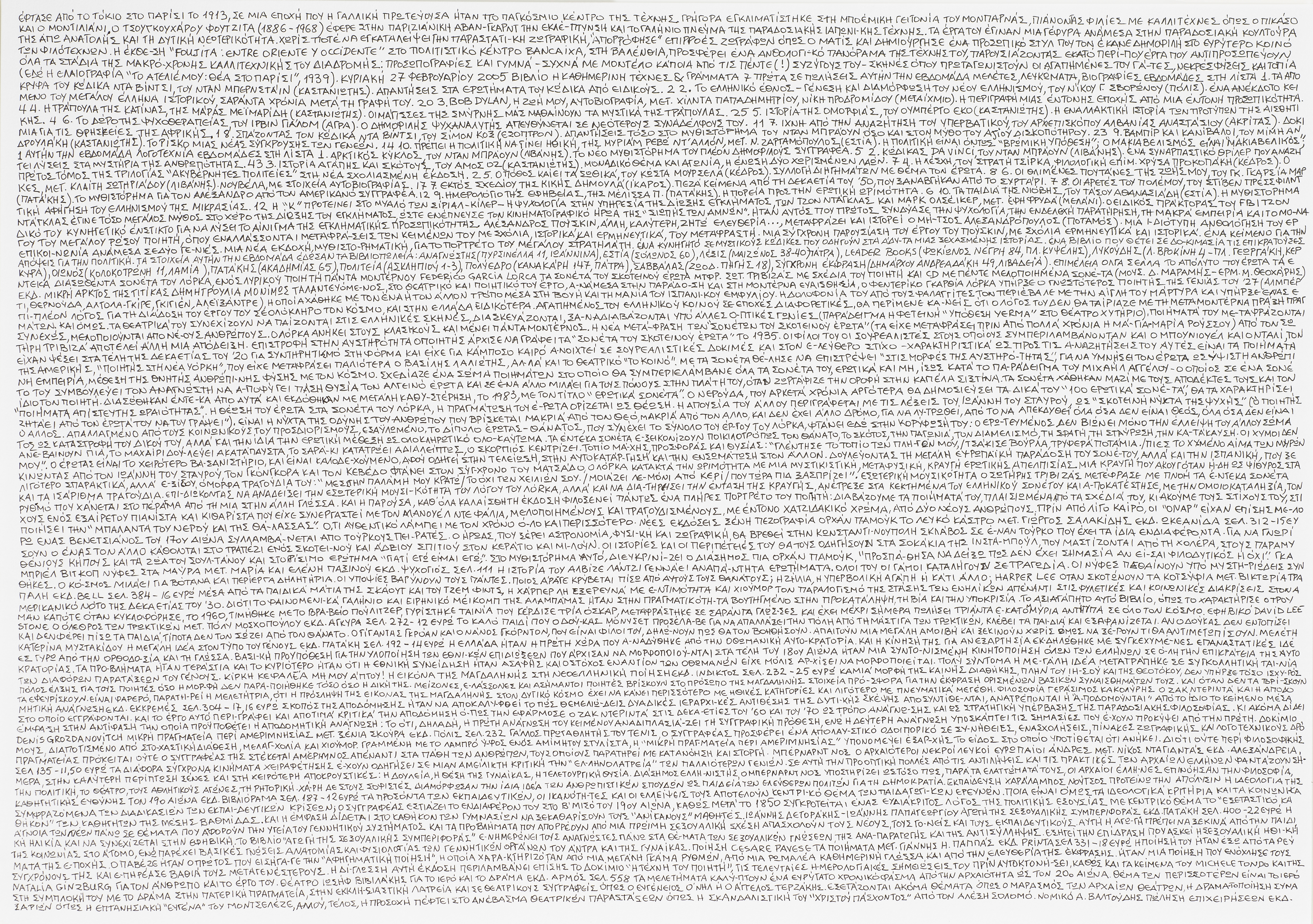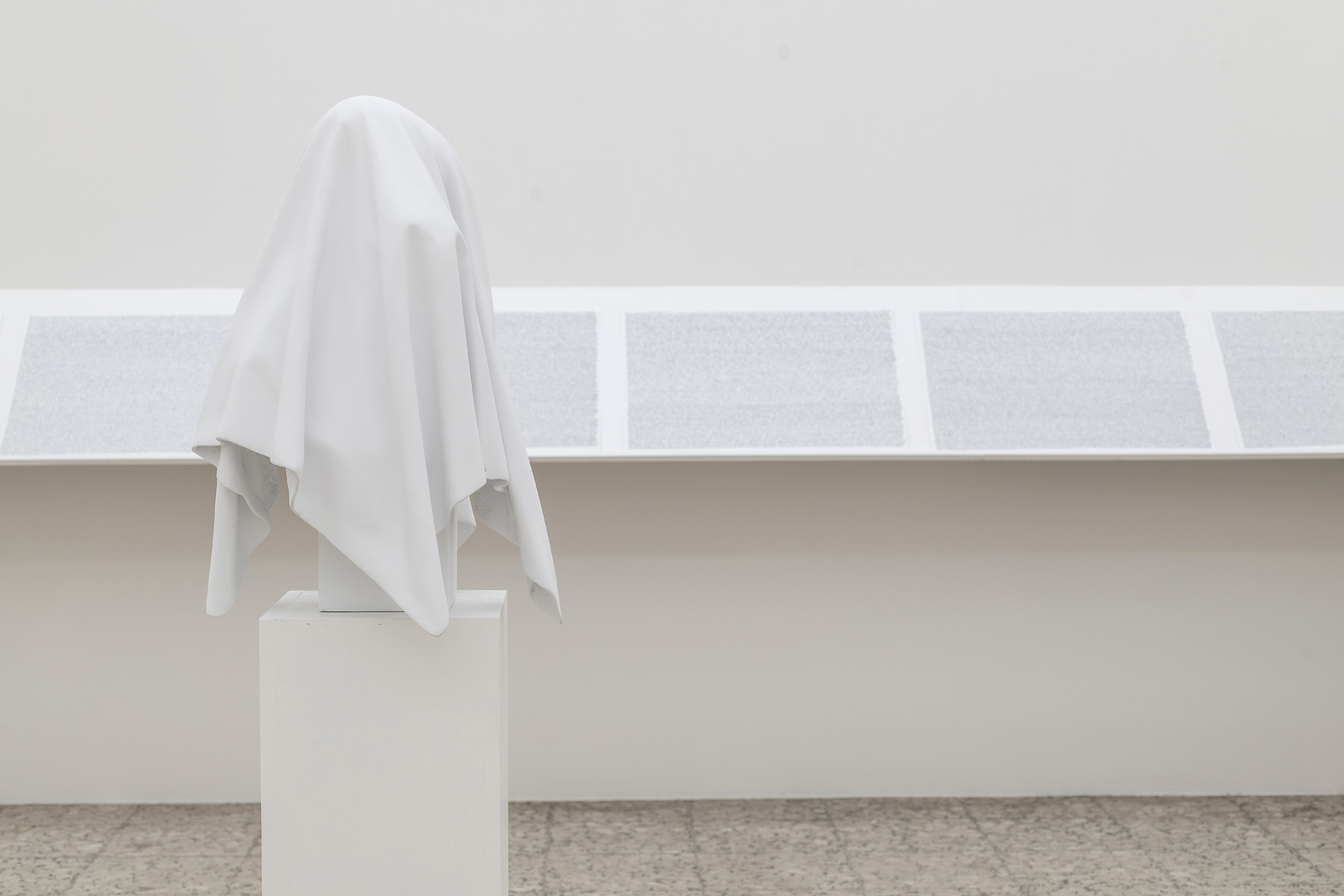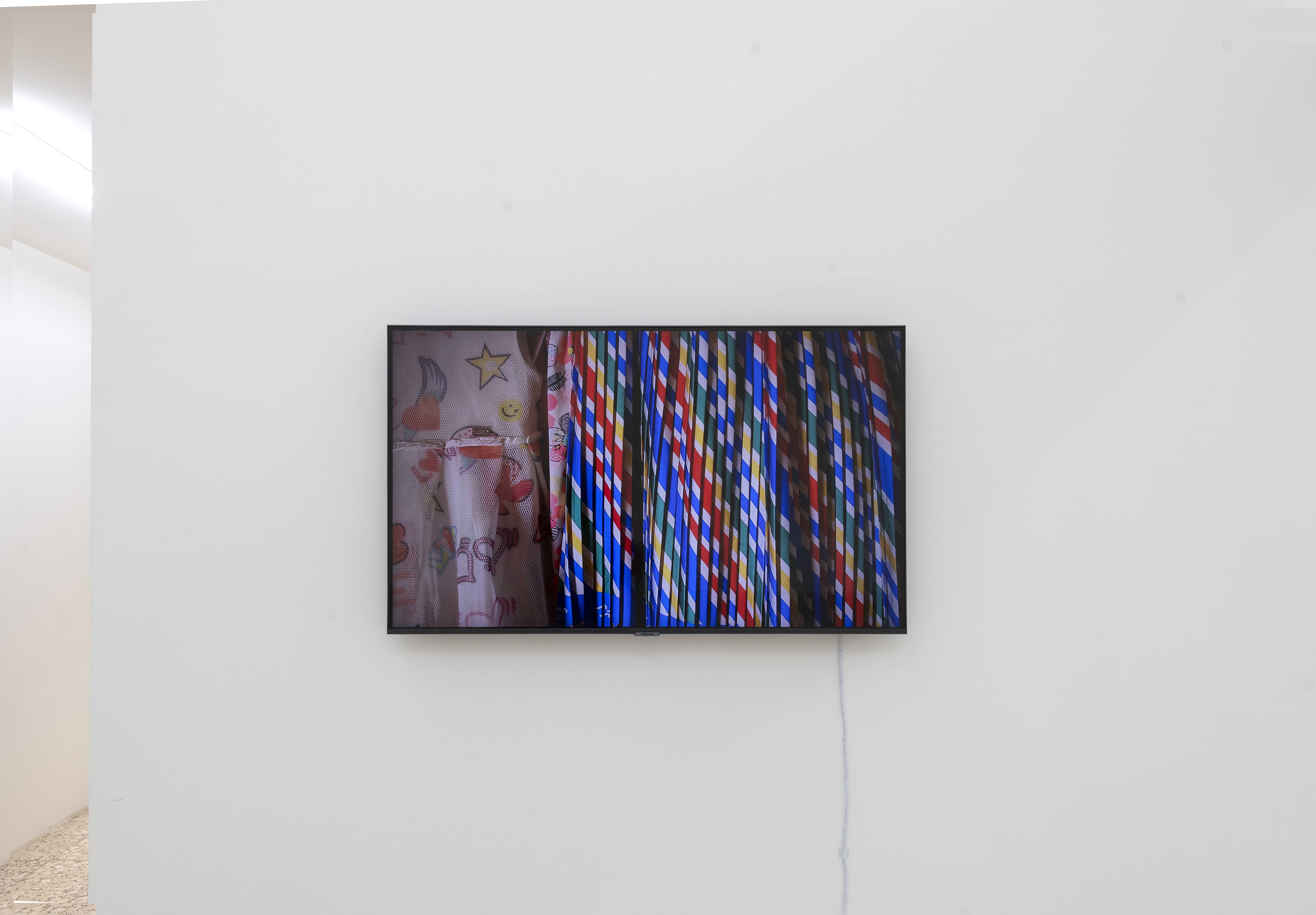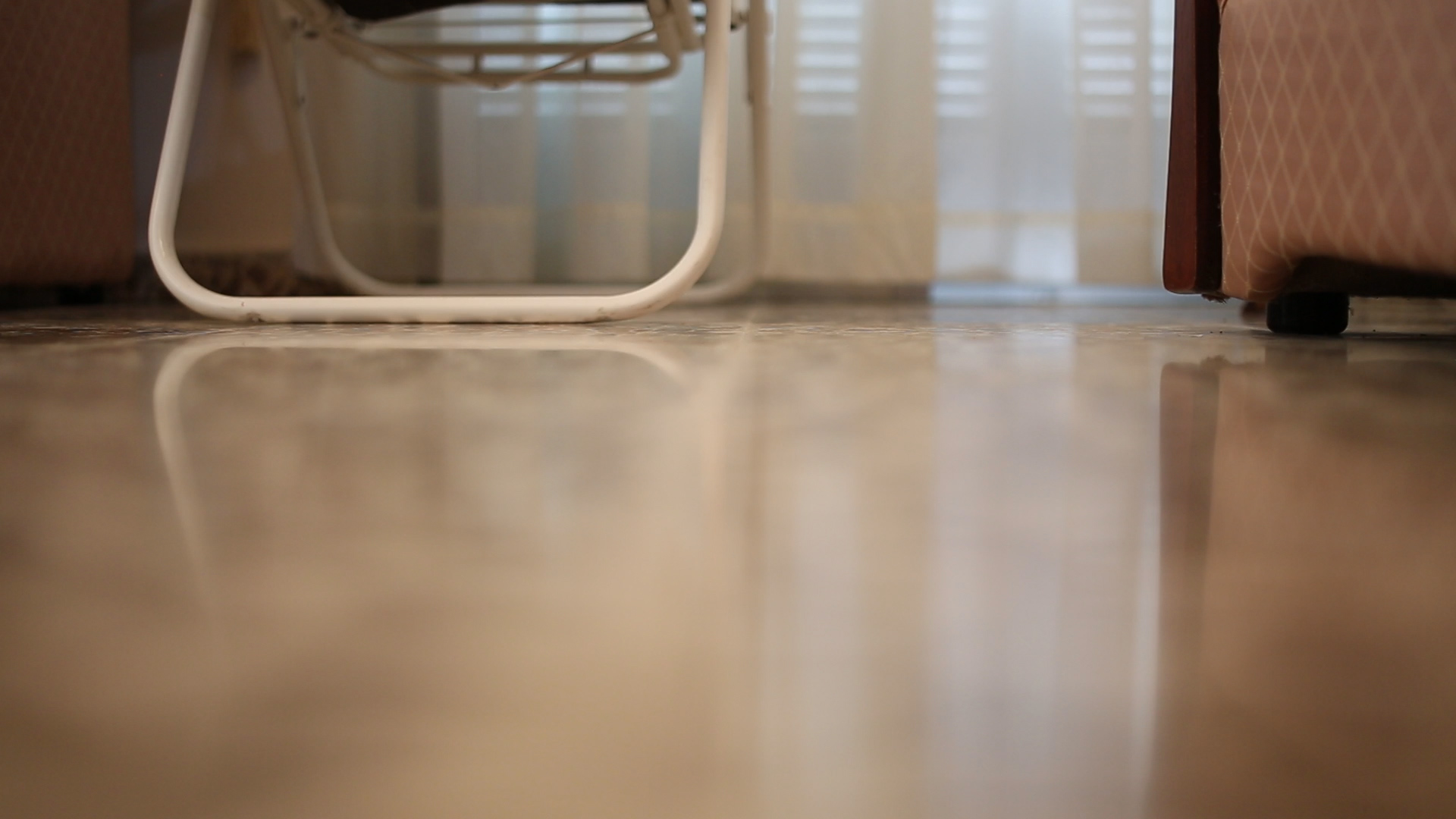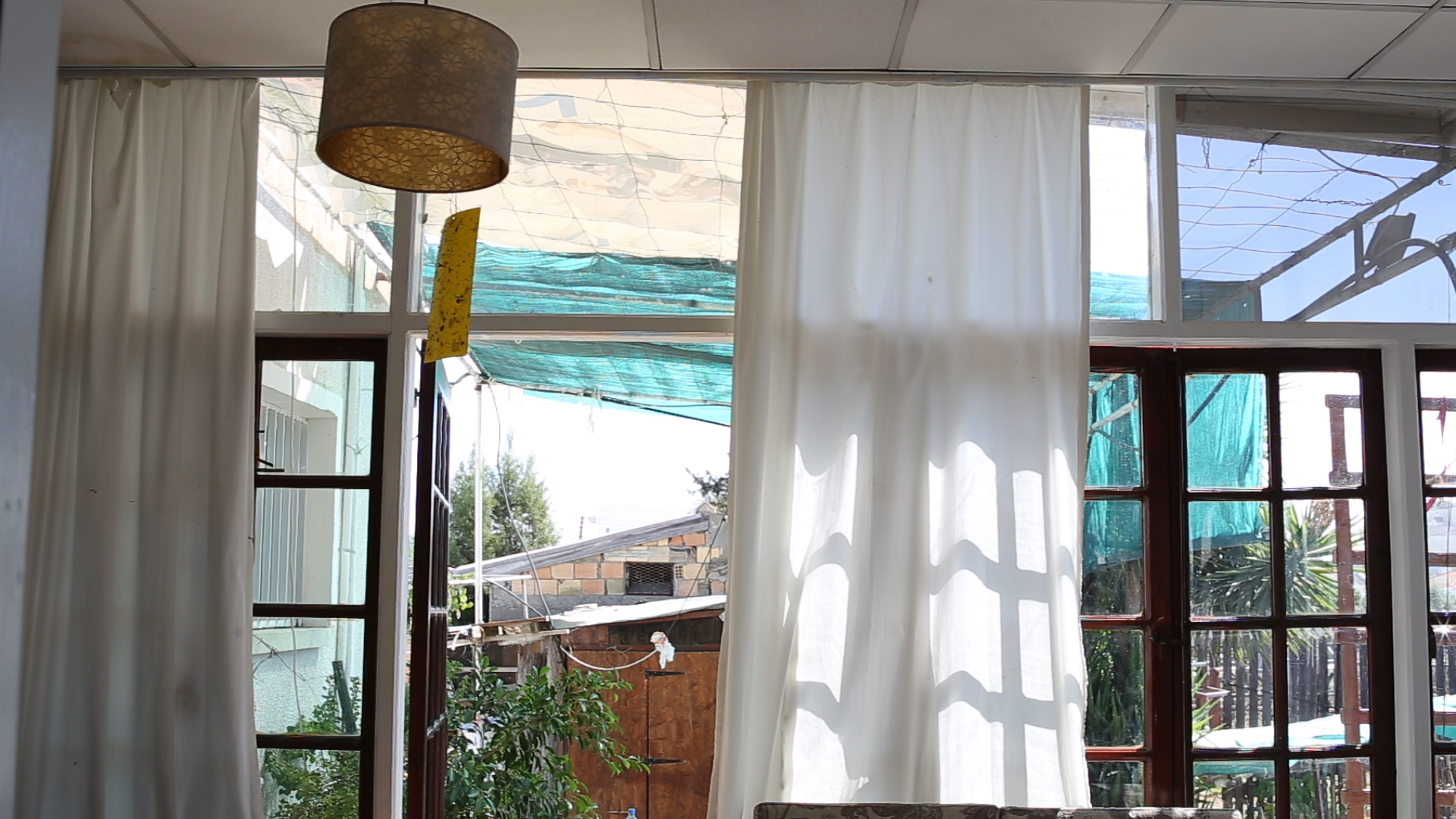Humming in non-linear time
The exhibition “Humming in non-linear time” flirts with what movement of time holds, how memories are reconstructed in new cracks of rhythm. Panayiotis Michael’s past and current work continues to be informed by a tracing of what becomes remote. Enigmatic and transforming, the project of returning to a scene or a proposed futurity in the hope of integrating experience may reflect futility. And often, the artist finds himself in the material of rethinking experiences of the “private” and the “public”, in a flow of associations and the forms that they take.
A Door and Six Heartbeats Away engages with the still quality of this house’s interior, situated in the Buffer Zone. Since its front entrance and garden rest in the prohibiting line, the residence hovers in an in-between space of entering and exiting, its only access being through the back door. The video vibrates through a human voice reciting a text written by the author without any previous viewing of the images. An incidental relationship of text and moving image engenders remains of life elsewhere, behaving therefore like a dissonance.
In the non-linearity of time, Panayiotis Michael ritualizes the idea of re-appearance.
During a long-term process beginning a couple of decades ago, he fervently entered a period of cutting out and collecting stories taken from newspapers and magazines, international and local. His intention was to read those “highlighted” news stories some day. Time lapsed and meanwhile he revisited them to form these diligent drawings named X, a series of comprehensive-free prose, a visualized abstraction of the “news” we keep on missing. An extraction of linguistic value transforms into a horizontalized rearrangement of “information”, a democratization that isn’t hierarchically designed in “headlines”, “side stories”, advertisements, “hidden” stories we are never told. The illegibility maintained or this subtle allurement to maybe gloss over the “text” unclutters an entire space from which to approach global affairs and information, and ourselves as players in them.
For Phileleftheros and Haravgi, Panayiotis Michael collected the articles that were published in both local newspapers during the period (2015-16) of the first round of negotiations between the two leaders of the dominant communities on the island. The only criterion was that each article be accompanied by a photograph of the leaders together. He reached the newspapers’ graphic designers regarding the font size and typography of the articles’ titles/subtitles, calculating thereafter the surface area of each letter and the aggregation of it. The lino prints become a visual translation of these official talks at their most abstract and dense moment, embodied in black and white parts whereby viewers may have a share in their progress, albeit in hindsight.
Likewise, the fiberglass sculpture generates space within a pause of ritualization that we arrive at without reaching the unveiling of the celebrated individual being memorialized. Referencing the ceremonial disclosure of a “public” statue or monument frozen in time, the preclusion of social groups from the making of that official choice lays open the legacies of injustices. And your thousand words brings to those present, an arrangement where you can voice “how this statue speaks to you”, providing a moment to review historical events in remembrance. Does it need to still be there? A nod to last year’s protests which spread across the UK after the tearing down of slave trader Edward Colston’s bronze statue in Bristol, and to movements across the US pressuring authorities to remove monuments linked to slavery and colonialism.
Maria Petrides
